Sometimes it feels like the field of nutrition is full of ever-changing jargon (and yes, this is me talking as an integrative registered dietitian nutritionist). Prebiotics and probiotics you’ve likely heard of. What about postbiotics? And what are each of them for? Where are they found? Why do they matter?
The gut microbiota
Microbes live on your skin and inside your body. It’s been estimated that about 90-95% of these microbes live in your gut. The number of microbes increases throughout your GI tract with the majority found in your colon. These microbes also known as the gut microbiota, are incredibly important for health.
In your gut, the microbiota protect against pathogens, line the gut creating a barrier, synthesize vitamins and hormones, harvest energy from foods, modulate gut motility, affect immune function, and even produce healthy metabolites.
While researchers are still trying to define exactly what healthy gut microbiota looks like in different situations, advancing technology in DNA sequencing is certainly bringing us closer.
Definitions to know
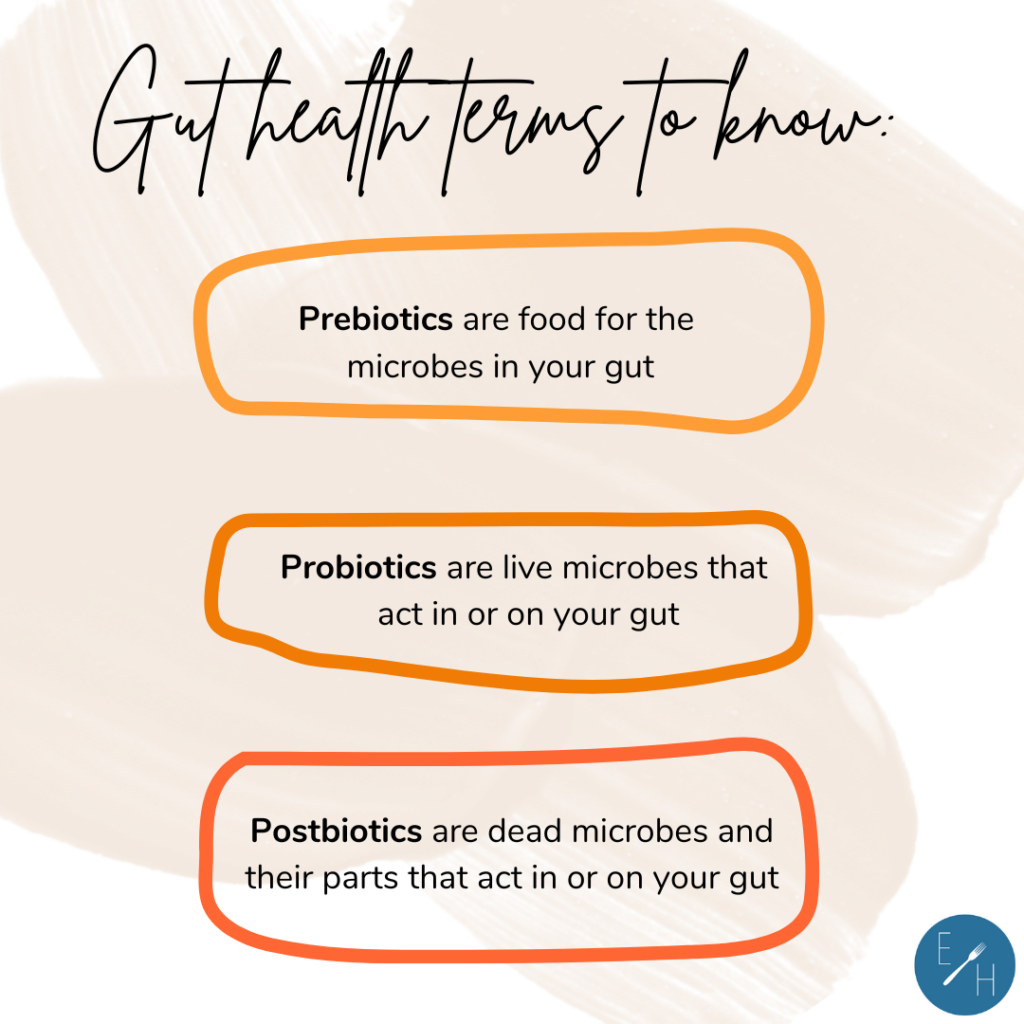
Let’s dig into this a little further:
The International Scientific Association of Probiotics and Prebiotics (ISAPP), a panel of experts from the fields of nutrition, food science, gastroenterology, microbiology, and others, developed consensus definitions of these terms only fairly recently. These definitions were developed in 2013 for prebiotics and probiotics and 2019 for postbiotics. According to the ISAPP, the official definitions of prebiotics, probiotics, and postbiotics are as follows:
- Prebiotics: “A substrate that is selectively utilized by host microorganisms conferring a health benefit.”
- Probiotics: “Live microorganisms that, when administered in adequate amounts, confer a health benefit on the host.”
- Postbiotics: “A preparation of inanimate microorganisms and/or their components that confers a health benefit on the host.”
Note that each of these definitions includes a statement about conferring a health benefit. So, both insoluble and soluble fiber are very good for your GI tract and overall health, BUT not all fibrous foods are officially prebiotics. Also, compounds like polyphenols are not fibers but are considered prebiotics since they are used as a substrate or food for the microbes. Live microbes are ONLY considered probiotics if they actually help you with some health benefit that’s been shown by research. The same applies to postbiotics. This matters because what you’ll see advertised in any of these categories have been studied specifically for their health benefits. If they haven’t been studied and shown to deliver a health benefit, they don’t count.
Where are prebiotics, probiotics, and postbiotics found?
Prebiotics
Prebiotics are food for the beneficial microbes. Prebiotics are metabolized by the good gut microbes and may help increase the levels of beneficial bacteria and/or the activity of the beneficial bacteria in the gut to produce signaling molecules or metabolites that are important for health.
Prebiotics are found naturally in some foods like bananas, chicory root, onions, garlic, and Jerusalem artichokes. These foods contain oligofructose and inulin at low levels. Grains like barley and oats as well as mushrooms contain beta-glucans. Apples, citrus fruits, plums, and gooseberries contain pectins. Mammalian milks (including human milk) contain galactooligosaccharides or GOS. Alliums like garlic, onions, and leeks are rich in fructans, as are cabbages, broccoli, pistashios, barley, and wheat.
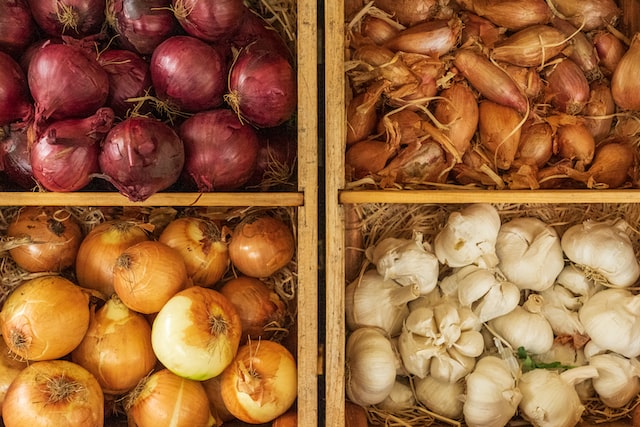
Certain foods may also contain prebiotics that were added during processing. Some yogurts, breads, cereals, baked goods, and even drinks may have prebiotics added to them. Look for the following on the label:
- OF or oligofructose
- FOS or fructooligosaccharides
- GOS or galactooligosaccharides
- Chicory fiber
- Inulin
Prebiotics are also added to certain dietary supplements and foods. Probiotic supplements often have prebiotics added to them to improve their effectiveness- these are often called synbiotics. There are also prebiotic only supplements to support gut health like Pure Encapsulations PureLean Fiber for example.
Aim for 5g or more of prebiotics daily. Eating a diet rich in vegetables, fruits, whole grains, nuts, seeds, and other fiber-rich foods can help support your gut health.
Note: Certain prebiotics may aggravate digestive conditions like IBS (irritable bowel syndrome). FODMAPs or fermentable oligosaccharides, disaccharides, monosaccharides, and polyols are all prebiotics or food for your gut microbiota. While the low FODMAP diet can be really helpful to alleviate symptoms like gas and bloating short-term, it’s important to figure out how to slowly incorporate certain prebiotic foods to help sustain your gut microbiota. If you’re wanting support with this, check out our nutrition coaching offers or find a nutrition professional who specializes in gut health who can support you with this.
Probiotics
There are many different genus, species, and strains of probiotics and as the research has evolved, certain probiotics have been found to support your immune system, help with gut symptoms like bloating, diarrhea, and constipation or IBS symptoms, support mood and stress, and even help manage elevated cholesterol levels. If you’ve taken antibiotics recently or are currently on an antibiotic, taking a probiotic at the same time may help to stabilize your gut microbiota and prevent side effects like diarrhea.
Probiotics are found in live foods like yogurt, fermented live foods like sauerkraut and kimchi, or as nutrition supplements. Most probiotics are specific strains from the following genera: Bifidobacterium, Lactobacillus, and Saccharomyces. Bifidobacterium and Lactobacillus are probiotic bacteria and Saccharomyces are probiotic yeasts.
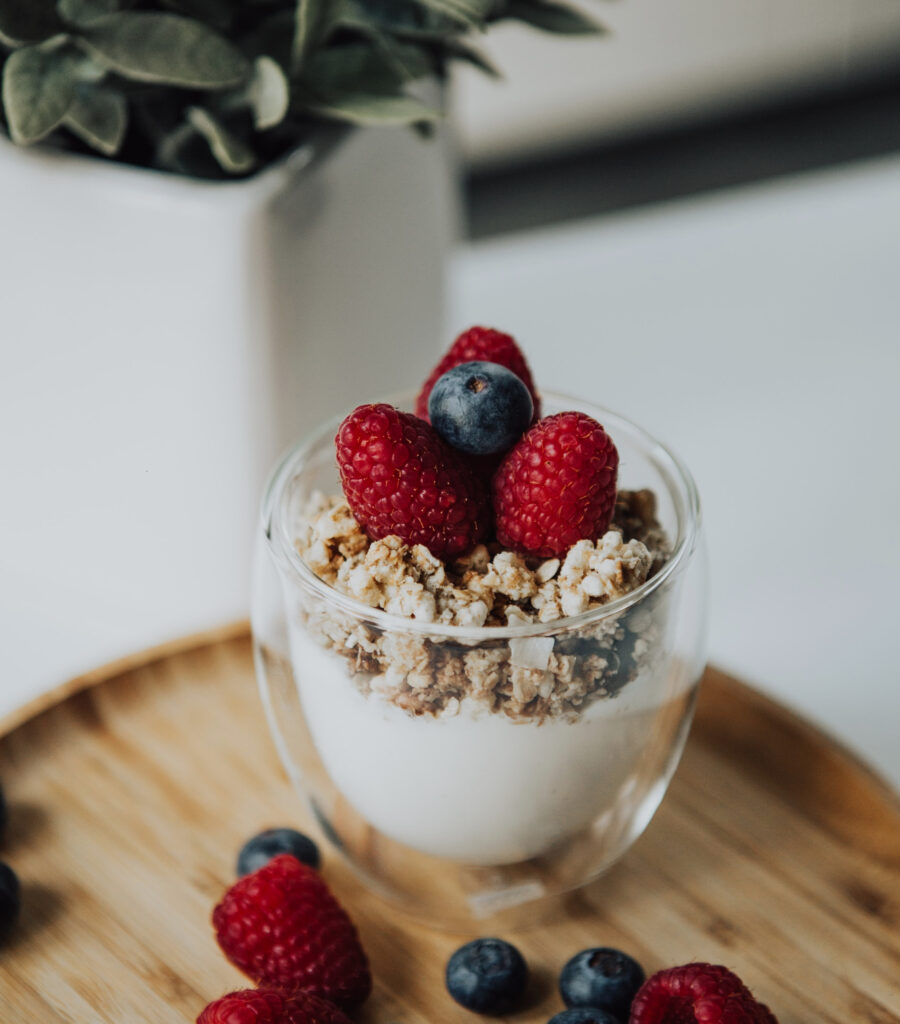
Probiotics don’t necessarily colonize the gut but they do convey beneficial effects- they interact with your immune system and with the microbes already colonized in the gut through their growth and the metabolites they produce.
Most probiotics have been tested at 1 to 10 billion CFU/day. If you’re considering taking a probiotic supplement, look for a product with research to support your intended benefit or consider working with myself or another functional nutritionist specializing in gut health who can help you figure out what and how much is needed. You can also check out my FullScript dispensary for a wide array of professional quality supplements available to order.
Postbiotics
Postbiotics are an active area of research. The research shows that postbiotics or microbes that are not alive can also provide health benefits. Postbiotics are inactivated microorganisms (either whole or their fragments) through heat, UV light, or some other method. When the microbes are inactivated, they may break into cell fragments and also contain certain compounds from cell growth like lactic acid, acetic acid, enzymes, or bacteriocins. These different compounds can impact other microbes, human cells, and immune function.
While postbiotic research is new and fairly limited right now, what we know is that microbes don’t need to be alive to provide a benefit. So if not all of the microbes in your probiotic supplement are still active or alive at the expiration date, the probiotics combined with the postbiotics (dead probiotics in this case) might still be helpful. Interesting, right?
If you’ve ever fermented vegetables, you know that a change in color of the vegetables and/or the brine is one of the indicators that the ferment is done. In the photo below, the jar on the left was fermented for 1 day and the jar on the right was fermented for 2 weeks. Not all of the bacteria from the early stages of fermentation can survive at the low pH and salt content in the later stages of lactic acid fermentation. The cloudiness of the ferment on the right could be postbiotics (if they were isolated and researched to have a health benefit).
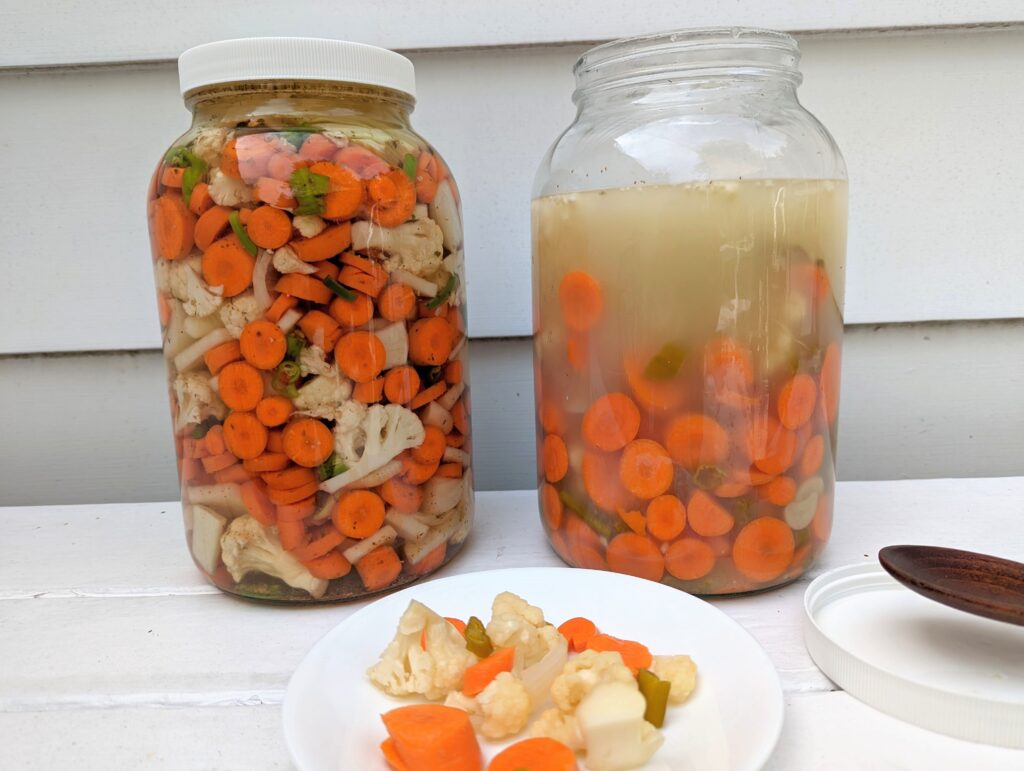
Where do fermented foods fit in?
As an integrative and functional nutritionist, I’m a big fan of foods that are delicious, flavorful, and nutritious. In the case of our current discussion of prebiotics, probiotics, and postbiotics, there is one type of food that may contain all three- fermented foods!
Fermented foods like sauerkraut, kimchi, miso, yogurt, kefir, and kombucha are all made by live cultures transforming a food through their growth and metabolism. If these foods are consumed raw (without pasteurizing, baking, cooking, etc), they contain live cultures which may or may not be enough of the right probiotic strains to confer a health benefit. These live foods may contain prebiotics, probiotics and/or postbiotics. In the case of certain yogurts, and fermented vegetables, all three may be present in the food: prebiotics, probiotics, and postbiotics.
What happens if you cook a live probiotic food like sourdough bread or add kimchi to your soup? The heat kills off the probiotics BUT if the food had prebiotics, they are still there. Also, the probiotics may have now turned into postbiotics. They are no longer alive but still could be beneficial so don’t worry too much about cooking your fermented foods.
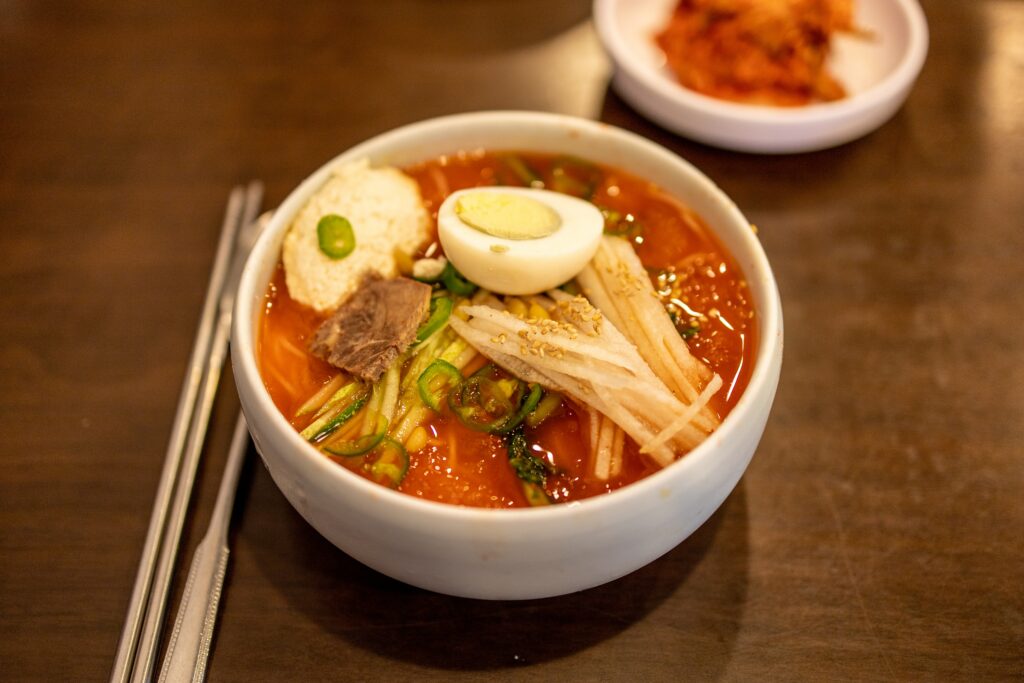
Consuming live microbes may help sustain your microbiota as you age. Be sure to include fermented foods that contain live microbes, prebiotics and fiber, as well as probiotic-containing foods as part of a healthy diet.
References and resources to learn more
- Gut Microbiota for Health
- Probiotic guide by condition
- ISAPP consumer information on probiotics, prebiotics, postbiotics, and fermented foods
- FullScript dispensary to order professional grade supplements, delivered to your door
Questions or comments? Be sure to leave a comment below. I love hearing your thoughts and questions.


Wow! LOTS of real good information is packed in here. Thanks for explaining it so well in terms I can easily understand.
Thanks Kathy! Glad you found this article on prebiotics, probiotics, and postbiotics helpful. =)
Thanks for the info Erin
You’re welcome Brenda!